

Engage prospects with a scan and streamline customer engagement with FREE QR code marketing tools by Sona – no strings attached!
Create a Free QR CodeFree consultation

No commitment

Engage prospects with a scan and streamline customer engagement with FREE QR code marketing tools by Sona – no strings attached!
Create a Free QR CodeFree consultation

No commitment
In today’s digitally connected world, organ repair services are navigating new complexities as they seek to harmonize traditional craftsmanship with evolving customer expectations. One persistent frustration for organ restoration companies is translating in-person touchpoints like repair consults, service estimates, or instrument history into actionable digital interactions. Despite diligent service delivery, critical customer signals often go unrecorded and high-value prospects slip through the cracks when interactions are not documented or tied to follow-up processes.
As the cost and complexity of organ repair continues to rise, customers expect more transparency, timely communication, and seamless access to maintenance records or financing options. At the same time, businesses face challenges in capturing timely lead information, tracking interest signals from anonymous inquiries, and ensuring consistent messaging across every channel. QR code technology offers a seamless, app-free approach to bringing transparency, speed, and efficiency to these processes, empowering both technicians and service managers to deliver richer experiences and close gaps in lead tracking.
By strategically using QR codes at critical touchpoints, organ repair service providers gain new visibility into buyer intent, streamline intake and documentation, and keep customers engaged throughout the project lifecycle. Thoughtful QR code deployment can drive measurable impact in organ repair and restoration, helping providers respond faster, build trust, and ultimately win more business in a competitive market.

Bridging physical and digital experiences is a persistent challenge in organ repair. When intake forms get misplaced, maintenance reminders are handed out on paper, or estimates circulate without a digital trail, both customers and providers feel the friction. A decision-maker might review a printed brochure or paper invoice, yet their interest never reaches your CRM. That lag suppresses pipeline velocity and risks losing opportunities to faster-responding competitors.
QR codes solve this by transforming every offline touchpoint into an immediate, trackable digital action. Scans connect people to booking forms, maintenance histories, technician credentials, and financing resources without an app. Each scan can be attributed to a channel, location, or technician, which means intent signals no longer disappear.
Forward-looking teams use QR platforms to automate unique code generation, connect signals directly to customer data platforms, and route high-intent scans to the right owners. Tools such as Sona QR make it simple to manage codes, update destinations after printing, and pull performance reports so your technicians and coordinators can focus on service, not spreadsheets.

Organ repair shops often struggle to convert offline interest into qualified, trackable leads. Printed material travels far beyond your direct control, and on-site discussions do not always translate into a digital record. Lack of visibility into who is expressing interest and where that interest originates results in slow follow-ups, duplicate work, and missed opportunities.
QR codes close these gaps by giving every physical asset a digital call to action. Scanners land on mobile-friendly destinations where they can learn, request service, or subscribe to updates. Teams benefit from reliable attribution and tighter coordination between marketing, operations, and sales.
In a craft-centered field where trust and proof of expertise matter, QR codes ensure that the craftsmanship customers admire is backed by modern, responsive communication. They provide clear pathways for action, and they generate the data needed to run a more predictable and profitable operation.

Organ repair services often present complex information that spans decades of historical care, precision repairs, and specialized parts. Packaging all of that knowledge into physical materials that are convenient for busy music directors, facility managers, and private owners is tough. QR codes allow you to present exactly the right information at the right time, without overloading the viewer.
Different code formats support different outcomes, and choosing the right one can dramatically increase engagement. Consider how your clients prefer to interact, then match code types to their needs and your workflows.
For materials that will be used over many months or years, dynamic codes are the safer bet. They allow you to change the destination as services evolve or inventory changes. Static codes can be reserved for one-time campaigns or assets that will not need updates.
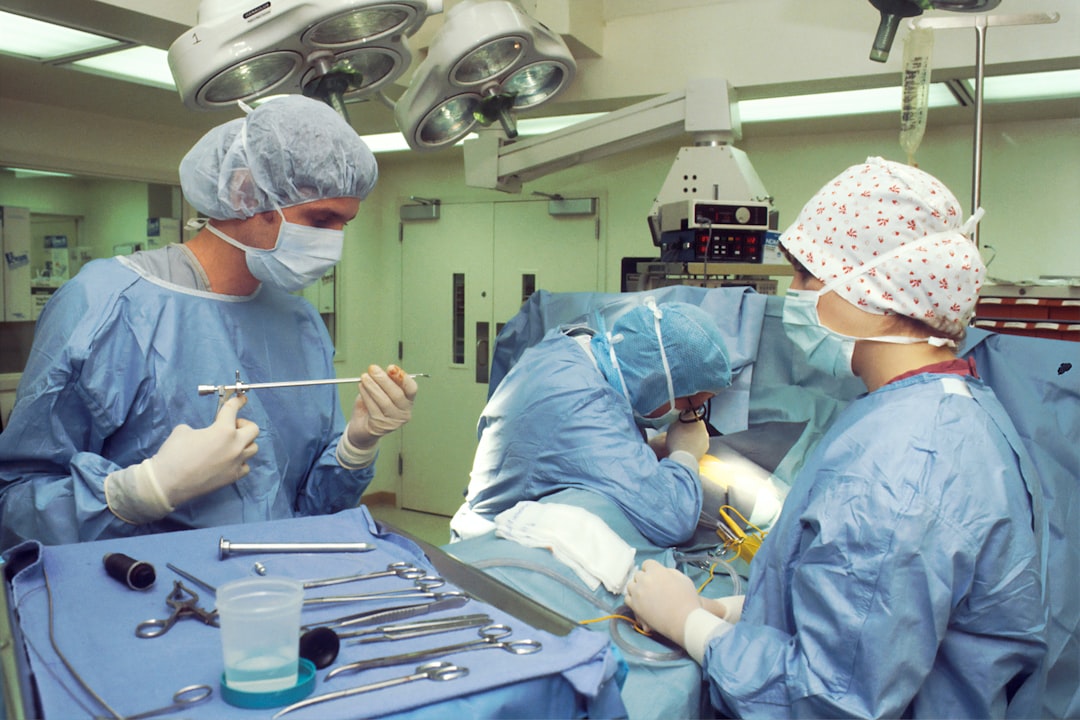
Growth comes from capturing existing demand more effectively and creating new pathways for high-intent actions. In organ repair, many missed opportunities occur in recurring service environments: routine tunings, seasonal maintenance, and pre-concert checks. These are moments when decision-makers are present and receptive, yet the next step is not captured.
Scanning behavior is context dependent, so place QR codes where they naturally support a decision. Consider the physical conditions around organs: low light, reflective finishes, and tight spaces inside cabinetry. Design with contrast, include a clear call to action, and put codes at comfortable scanning heights.
By mapping codes to the moments where decisions are made, you reduce the friction between curiosity and commitment. Over time you will identify the channels that produce the best customers, adjust placement strategy, and scale what works.
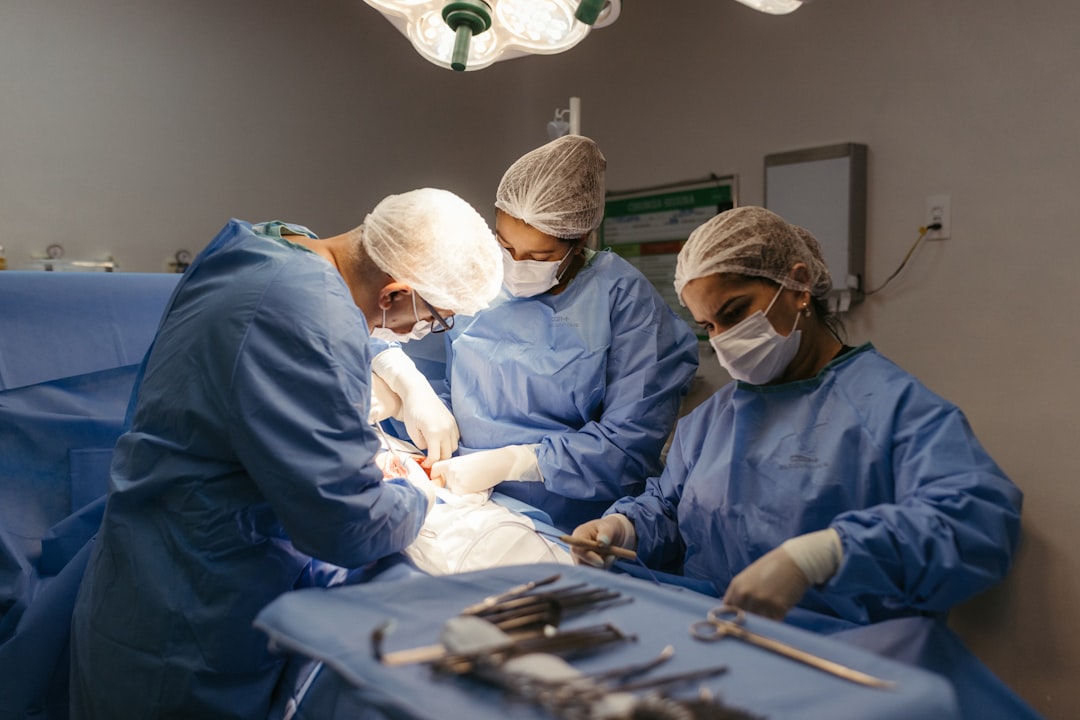
Missed follow-ups often stem from the same root problem: a customer took interest, then the path forward was unclear or inconvenient. QR codes clarify the next step, record the signal, and give your team the context needed to respond.
These use cases focus on typical organ repair interactions: on-site inspection, estimate approval, maintenance scheduling, and education for owners and boards. Each one converts an analog touchpoint into a measurable digital action.
Teams that implement these use cases often report faster quote approvals, higher service-plan attachment rates, and more accurate customer records. You will also gather data about which assets and messages move prospects from curiosity to booking.
Every scan is a signal. It tells you who engaged, where engagement happened, and what they were trying to accomplish. With multiple codes across touchpoints, you can automatically segment audiences based on intent and lifecycle stage, then tailor follow-ups to match the moment.
For organ repair, distinctions matter. A music director comparing full restoration paths should not get the same communication as a facilities manager who scanned a code on a tuning checklist. Segment by role, institution type, and urgency so each person gets relevant resources and a clear next step.
With a platform like Sona QR, these segments update in real time. Scan activity enriches records and activates workflows automatically, so your efforts scale without adding manual work.
QR codes unify campaigns across print, digital, and on-site interactions. They connect content and context so people can take the next step without friction, and they give you the measurement framework to compare performance.
In organ repair, marketing channels are often diverse: recital programs, conservatory mailers, historical society newsletters, trade conferences, showroom displays, and invoices. QR codes align these channels under a single data model, which means you can control messaging and evaluate ROI consistently.
A centralized platform like Sona QR consolidates codes, tracks performance by channel, and syncs data with your CRM. This keeps campaigns coordinated and insights accessible to both marketing and operations teams.
Uncoordinated deployments can scatter valuable data and dilute outcomes. Align your QR program to business goals, plan placements that match real-world behavior, and build a clean analytics foundation so you can learn what works and scale it with confidence.
Strong execution does not require enormous budgets. It requires clarity about the journey, consistent design and messaging, and a system that links scans to follow-up workflows. Use the steps below to build a repeatable process.
Start with the single most important gap in your current journey. For many organ repair companies, that is faster intake for inspections, stronger follow-up from events, or a smoother path from estimate to approval. Define a measurable goal such as increased quote approvals within seven days, more scheduled site visits from direct mail, or higher maintenance plan enrollment.
Map the audience and environment. If you are targeting music directors during rehearsal, the code must be visible and scannable from a few feet away. If you are targeting board members reviewing proposals, the code should focus on credibility resources and financing options.
Decide if the destination will need to change or be tracked. For campaigns that run more than a few weeks or assets that could be updated, dynamic codes are the right choice. They let you edit URLs, add UTM parameters, and gather analytics in one place.
Reserve static codes for evergreen assets that never change. For everything else, prioritize dynamic codes so you retain the flexibility to refine destinations and calls to action as you learn.
Design for the environment and the audience’s likely behavior. Include a clear frame, strong contrast, and a short, benefit-driven call to action like “Scan to schedule a site visit” or “Scan to hear restoration samples.” Add your logo for brand trust and size codes so they are easy to scan at arm’s length.
Test in realistic conditions. Scan on iOS and Android, in low light near organ consoles, and on glossy surfaces where glare is common. Adjust size, placement, and background color to prevent false negatives. If the instrument case is reflective, use matte labels or a small stand with a code card.
Place codes where a next step makes sense. Inside an invoice, invite clients to review financing or approve estimates. On a technician badge, route to credentials and service status. On event banners, offer a simple path to book a consultation or download a restoration guide.
Broaden deployment beyond promotional placements. Add codes to tuning checklists, reconditioned parts packaging, and inspection tags inside cabinetry. The aim is to close every loop where a human conversation used to end without a digital record.
Instrument every code with analytics. Track scans by time, device, and location, then connect those events to outcomes like form submissions and booked visits. Evaluate which materials, technicians, or events drive conversions, not just scans. For modeling across touchpoints, review multi-touch attribution.
Iterate on messaging, size, visuals, and landing page content. A small change like “Scan for maintenance plans with monthly pricing” can increase action among budget-sensitive boards. Feed insights into your CRM and marketing automation so retargeting is informed by real behavior. Platforms such as Sona QR centralize these tasks and make optimization continuous.
In organ repair, it is not enough to know that a scan occurred. You need to tie scans to estimates, approvals, and booked work. Without that visibility, you cannot confidently invest in the channels and materials that produce the best clients, nor can you prove the impact of your campaigns to stakeholders.
Build your measurement plan with end outcomes in mind. Decide which conversions matter most: inspection requests, estimate approvals, maintenance plan enrollments, and payments. Then configure your QR platform, landing pages, and CRM so each conversion is captured and attributable to a source.
Sona QR helps you track scans and measure engagement by channel, while Sona.com connects offline signals to pipeline and revenue through identity resolution and multi-touch attribution. Together they give you a complete picture from first scan to signed contract. Learn more about account identification and why revenue attribution matters for growth.
Scaling success requires discipline, not complexity. Consistent code assignment, clear CTAs, and smart automation ensure that every scan becomes a lead, and every lead gets appropriate follow-up. Over time, repeatable practices turn QR from a tactic into core infrastructure for your customer journey.
As you expand, share the why with your team and clients. Technicians who demonstrate “Scan this to see your organ’s maintenance history” create immediate value. Clients who see the benefit become more likely to use QR-enabled touchpoints in the future.
These practices keep your data clean and your pipeline steady. They also help your team deliver consistent experiences regardless of which technician is on site or where interest originates.
Expectations for transparency, speed, and communication are rising across the board, and organ repair services are no exception. QR codes provide the connective tissue that ties expert craftsmanship to modern customer experience. They ensure every brochure, invoice, event, or on-site conversation leads to a digital action and a recorded signal.
When executed thoughtfully, QR programs accelerate estimates and approvals, increase maintenance plan adoption, and reduce operational friction. They also deliver the analytics needed to invest in the right channels and increase win rates in a competitive market.
With Sona QR, you can generate dynamic codes, manage placements across channels, and track performance in one place. Sona.com extends that capability by connecting scans to revenue through attribution and identity resolution. Start by digitizing your most important offline moments, then expand to a full journey strategy where every scan brings you a step closer to a well-cared-for instrument and a satisfied client. Start creating QR codes for free.
QR codes have revolutionized organ repair services by transforming patient engagement and access into seamless, measurable experiences. Whether it’s enabling instant access to vital medical information, streamlining appointment scheduling, or supporting post-repair care instructions, QR codes replace cumbersome processes with quick, mobile-friendly actions that improve outcomes and patient satisfaction. Imagine patients and healthcare providers effortlessly retrieving critical data at the point of care or tracking the status of ongoing treatments through a simple scan.
With Sona QR, you can create dynamic, trackable QR codes tailored for organ repair services—update information instantly without reprinting materials and connect every scan to improved patient outcomes and operational efficiency. No more missed connections or outdated instructions—just smarter, patient-centered care that drives trust and engagement. Start for free with Sona QR today and empower your organ repair services to deliver better access and care, one scan at a time.
Organ repair involves intake and education, real-time project access, estimate approval, maintenance scheduling, and education for owners, all supported by digitized processes like QR code integration to streamline communication and documentation.
Look for services that provide transparent communication, timely updates, digital access to maintenance records, and use technologies like QR codes to track service history and technician credentials for trust and efficiency.
The article does not specify the average cost, but it notes that organ repair costs and complexity are rising, making transparency and financing options important aspects to discuss with your service provider.
Signs include the need for inspections, tuning visits, or visible issues noted during routine maintenance; QR codes on instruments can facilitate easy reporting and scheduling of these services.
Maintain your organ by following recommended care schedules accessible via digital maintenance logs linked through QR codes, scheduling regular tunings and inspections, and using service plans offered by repair providers.
QR codes transform physical touchpoints into trackable digital actions, enabling seamless service requests, access to maintenance histories, financing options, and real-time project updates without requiring app downloads.
QR codes should be placed on brochures, invoices, technician badges, event signage, organ parts packaging, inside organ cases, and tuning checklists to capture interest and streamline service interactions.
Common QR code formats include web links for booking and galleries, vCards for contact sharing, SMS or email pre-fills for service requests, payment and financing portals, and digital maintenance logs.
They use scan analytics from QR codes to monitor location, device, and timing of scans, correlate scans to form submissions and bookings, and integrate data with CRM systems for actionable insights and continuous improvement.
Best practices include selecting clear use cases, choosing dynamic QR codes for flexibility, designing codes for easy scanning, strategically deploying codes across channels, and measuring and refining campaigns based on analytics.
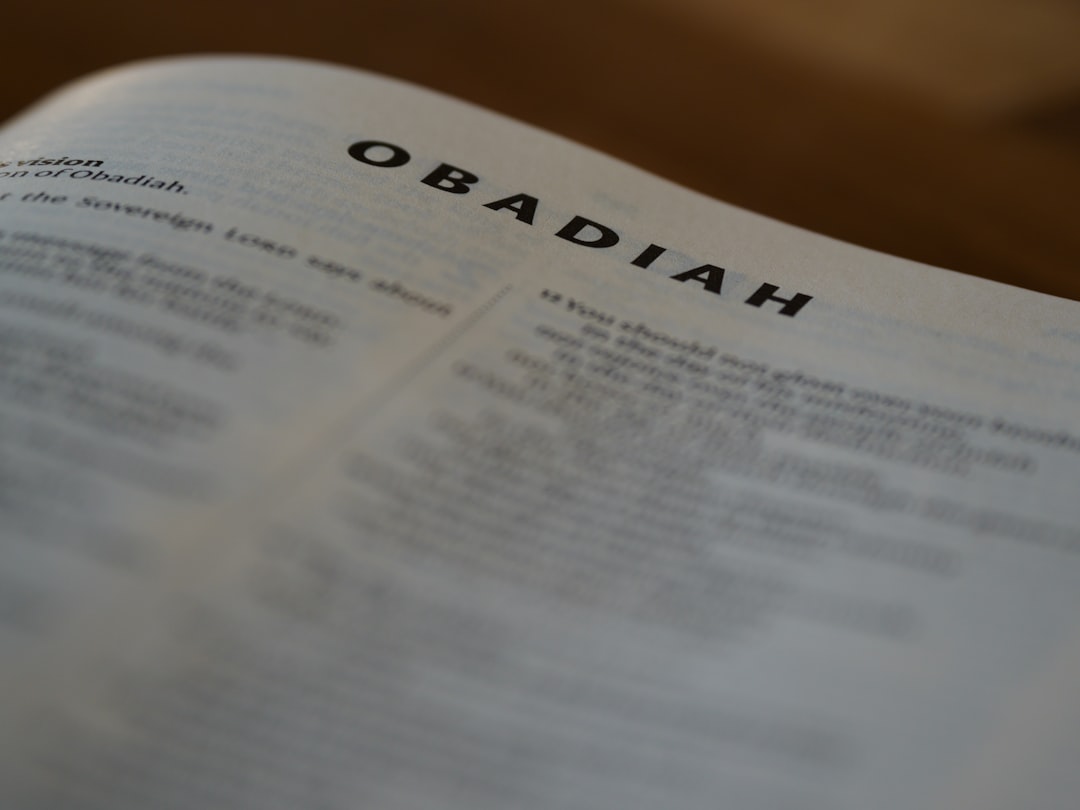
In today’s digitally driven world, QR codes have evolved from a novelty to a strategic powerhouse in bridging offline engagement with online action. For organ repair services, QR codes represent a seamless, high-impact way to elevate access to critical information, streamline service requests, and deliver value to both new and existing clients without the need for app downloads or complex manual processes.
Traditional organ restoration companies often rely on printed brochures, static business cards, or manual intake forms, which can slow customer engagement and cause promising prospects to slip through the cracks when there is no easy way to understand who is interested or to follow up with high-value visitors. The result is missed opportunities, lost leads, and a fragmented picture of potential demand. With QR codes, leading organ repair service providers can immediately connect physical touchpoints, such as maintenance logs or appointment cards, with digital experiences, creating faster paths from inquiry to action and capturing valuable data at every step.
This article explores how QR codes are transforming musical organ maintenance, repair workflows, and client interactions by enabling instant access, granular tracking, and the segmentation that is often missing in legacy processes. Discover how modern strategies and tools help organ repair businesses implement QR campaigns that drive measurable engagement and address persistent challenges like tracking anonymous interest and surfacing high-intent leads before they go cold.

QR codes bridge the gap between hands-on organ maintenance and actionable digital outcomes, making it easier to capture high-quality leads and streamline service requests. When paper-first processes slow the journey from interest to booking, QR-enabled touchpoints deliver clear next steps, self-service access, and a trackable path to conversion.
The key is to deploy QR codes intentionally at the moments that matter: during a consultation on the organ bench, after a recital, on an invoice that gets seen by a church board, or on the maintenance card attached to a pipe chest. These placements should deliver a useful outcome immediately, such as scheduling a tuning, downloading a restoration proposal, or submitting a warranty claim. With modern platforms like Sona QR, you can spin up dynamic codes quickly, adjust destinations as projects evolve, and connect scan data to your CRM for timely follow-up.
A modern organ repair technician might swap traditional appointment forms for QR-enabled scheduling, reducing no-show rates and administrative overhead. Dynamic codes can trigger pre-filled booking forms, link to a serialized maintenance history, or deliver parts-fitment guidance that previously required a phone call, keeping the momentum from scan to service confirmation. If your forms run on Google, use a Google Forms QR for quick capture.
Instead of handing out paper maintenance reminders that often get lost, include a dynamic QR code on service records that links directly to a booking form or client portal. Each scan acts as a high-intent signal that can be tracked and used to enroll customers in relevant nurture tracks, ensuring the opportunity never slips through the cracks. If a committee member scans multiple times to compare options, your team can follow up with a targeted email series that addresses budgeting, timeline, and sound preservation priorities.

Organ repair services often operate in settings where committees, music directors, and venue managers collaborate to make decisions. Printed materials circulate widely, yet the path from initial interest to a confirmed site visit or estimate can be slow and opaque. QR codes solve this by giving stakeholders an immediate digital onramp that captures interest, shortens response times, and provides measurable data across the journey.
This is especially important in restoration and maintenance contexts where details change as projects progress. Dynamic QR codes let you update technical documentation, safety notices, or progress photos without reprinting. Equally important, QR analytics provide visibility into which venues, boards, or curators are engaging so you can prioritize outreach and allocate technician time effectively. For a broader strategy view, explore Sona QR’s QR marketing best practices.
For example, a QR placed on a church organ’s maintenance card can link to a restoration status page and a booking option for additional voicing sessions. Each scan informs you which committees and caretakers are interacting, and how frequently, prompting timely follow-ups such as a complimentary inspection or a proposal walkthrough.
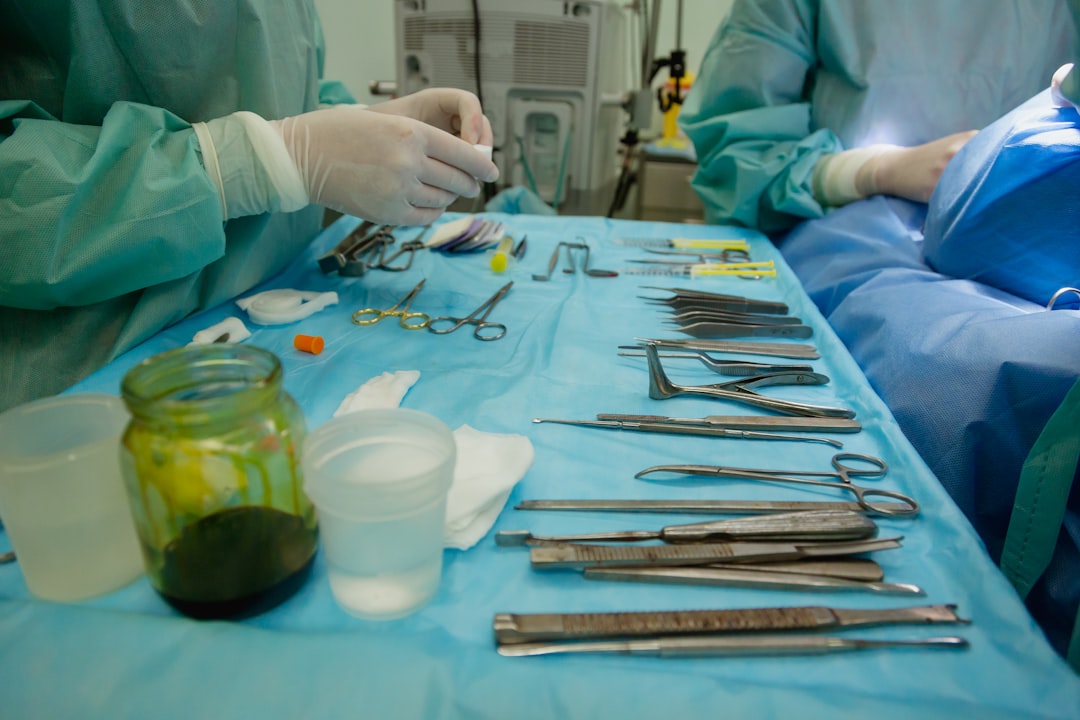
Organ repair teams use QR codes to fulfill different jobs, from initiating service requests to sharing technical documentation. Selecting the right format improves usability and tracking, while dynamic management ensures content remains accurate as projects evolve.
Dynamic codes are used most often because they allow you to change destinations, add campaign parameters, and record performance without reprinting. Static codes can be useful for low-stakes, untracked destinations such as a permanent link to your homepage on a brochure. Given the project-driven nature of organ work, dynamic codes provide essential flexibility.
With Sona QR, you can create and manage all of these formats from one dashboard, attach UTM parameters for attribution, and update destinations without reprinting materials as projects progress or client preferences change.
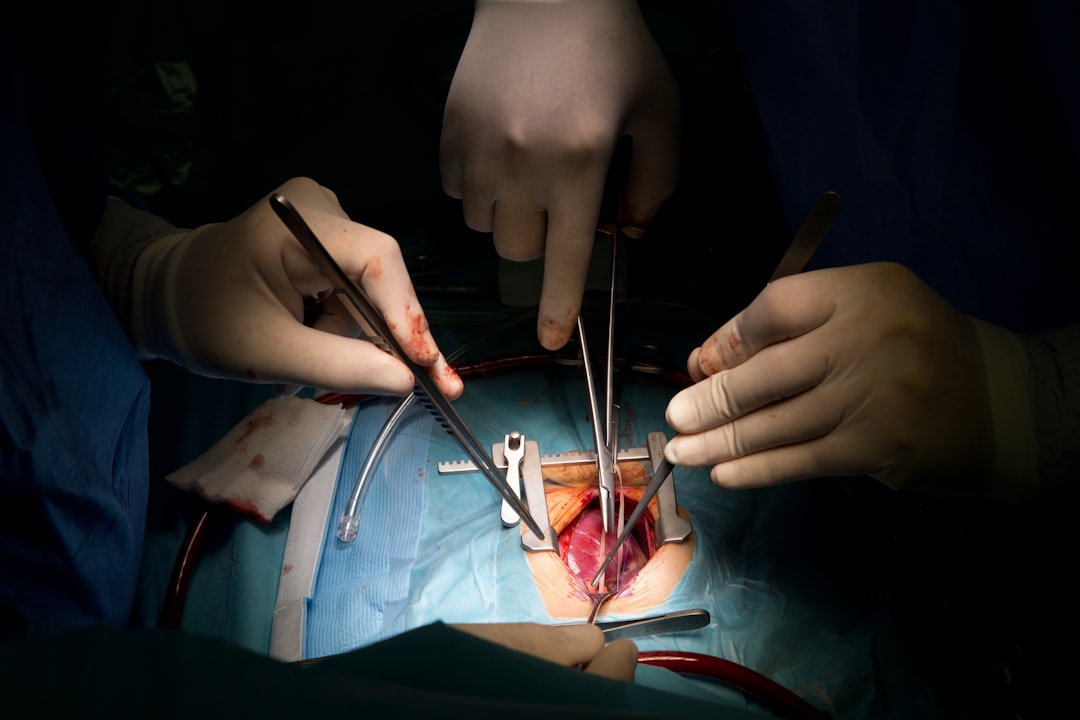
Growth in organ repair often depends on seizing moments when interest is high, yet traditional channels have long suffered from untracked or anonymous engagement. QR codes illuminate these moments by turning a glance at a program note or a maintenance sticker into a measurable action you can act on.
Focus on placements where caretakers, committee members, musicians, and patrons already interact with your materials. Each scan tells you something about who is paying attention, what content resonates, and where the next conversation should start. This shifts your approach from reactive to proactive, using real behaviors to guide outreach.
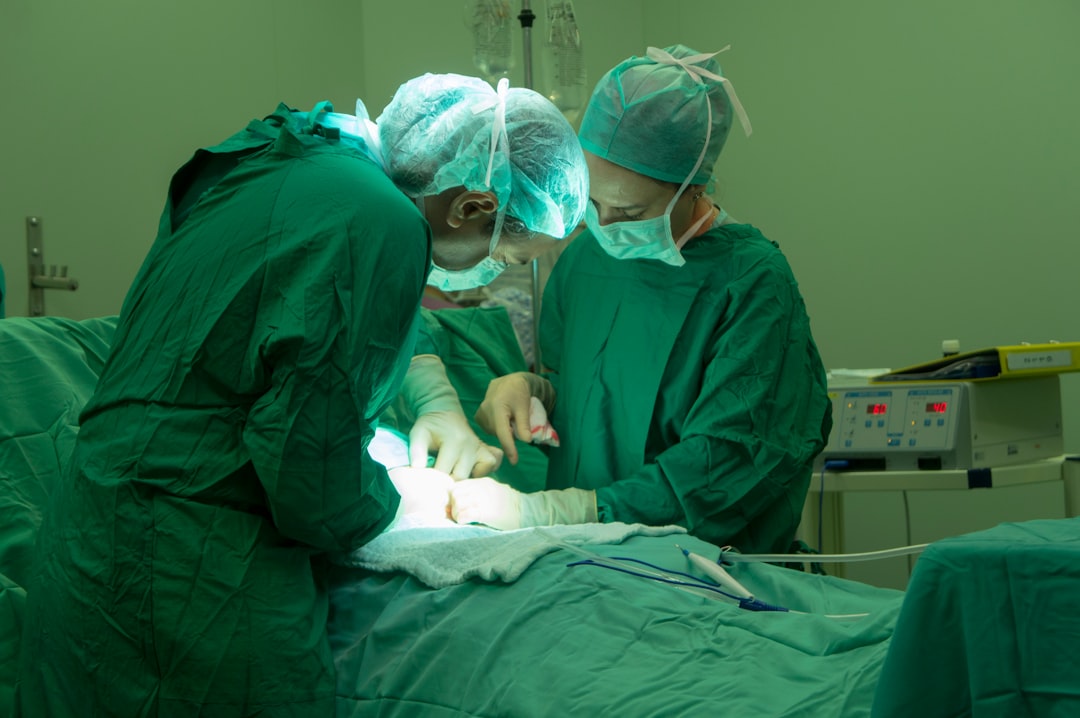
QR codes can be embedded across the organ repair lifecycle, from discovery to long-term maintenance. The most effective uses meet people where they already are and deliver a single, valuable action quickly: book, learn, request, or track. Pair each use case with a clear outcome so you can measure improvements over time and iterate with data.
Below are practical use cases matched to common interactions in this field. Each one can be deployed with dynamic codes to ensure flexibility and traceability as your campaigns scale.
As these use cases roll out, establish clear benchmarks for scan-to-action conversion, the percentage of unique versus repeat scanners, and the correlation between scan patterns and service revenue. Over several quarters, these metrics reveal which placements consistently generate demand and which should be refined or retired.
Every QR scan is a signal that captures intent, context, and level of urgency. By deploying multiple codes across your materials and venues, you automatically segment your audience based on behavior. This allows you to orchestrate retargeting and follow-up that feels relevant, timely, and respectful of a decision-maker’s stage in the journey.
Start by distinguishing audience types common in organ repair. Church committees evaluating a full restoration need different content than a school music director booking seasonal tunings. Historical society curators may be reading to learn about preservation techniques before they speak with donors. Each of these journeys can be mapped to a set of QR interactions that tell you what to send next.
With Sona QR, each code becomes a smart entry point into your funnel. You can append UTM parameters, classify scans by channel, and build audiences you retarget based on real behavior. For advanced tactics, follow Sona’s Playbook titled Intent-Driven Retargeting.
QR codes are most powerful when they unify offline and online touchpoints, turning static materials into interactive, measurable experiences. Organ repair companies rely on brochures, recital programs, invoices, and site signage, yet historically have struggled to connect these assets to data-driven follow-up. QR codes fix this by making every physical asset a digital trigger connected to your pipeline.
Layer codes across channels that already drive awareness and discussion. A brochure at a regional AGO meeting can deliver a curated restoration gallery; an invoice can offer a hassle-free way to book the next appointment; a livestreamed console rebuild can invite viewers to schedule a consultation. The result is a connected funnel in which interest flows directly into action, supported by precise attribution.
QR codes serve as the offline onramp to your digital marketing engine. With a centralized platform like Sona QR, you can manage all codes, monitor performance across channels, and sync scan data with your CRM and ad platforms for faster, smarter follow-up.
Translating strategy into execution is simpler when you follow a repeatable framework. Treat each QR initiative as a focused campaign with a defined goal, trackable milestones, and an optimization loop. This approach lets you test placements, compare outcomes, and scale what works without reinventing the wheel each time.
Before you begin, confirm that your destinations are mobile-friendly, your CTAs are explicit, and your analytics are set up for attribution. Then, select one or two high-impact use cases as a pilot, such as booking tune-ups from maintenance cards or capturing post-recital inquiries. Expand to additional placements as data validates your approach.
Set specific goals such as reducing no-shows from paper appointments, capturing anonymous event attendees, or converting invoice recipients into scheduled bookings. Align each campaign to a measurable pain point like incomplete follow-up or dropped interest after a concert. For example, aim to increase scan-to-booking conversions from 8 percent to 15 percent on maintenance cards over one quarter.
Use dynamic codes in most cases so you can edit destinations and collect analytics as your campaign evolves. Static codes can work for permanent references where tracking is not required, but be cautious when using them in high-value journeys because they create blind spots.
Design for scanning behavior in real contexts. Include strong, benefit-driven CTAs and size the code appropriately for the viewing distance. Always test on multiple devices, under different lighting conditions, and from realistic angles a caretaker or concertgoer would use.
Roll out first where analog gaps have historically led to missed revenue. Concerts, invoices, trade events, and maintenance cards are proven placements. Match placement to audience behavior and scanning context to maximize response.
Monitor scans by asset, event, and segment. Watch where leads are being generated or left untapped. Use dashboards to optimize in real time, export actionable lists to your sales and service teams, and A/B test landing pages and CTAs to improve outcomes quarter over quarter.
Sona QR supports every step in this process, from generating dynamic codes to tracking, segmenting, and syncing scan data with your CRM. Start creating QR codes for free. Start small, learn from the metrics, and scale into a comprehensive, multi-placement program.
Many organ repair firms struggle with opaque pipelines. Flyers get read, invoices get passed around, and programs get saved, yet most of that interest remains invisible. QR analytics bridge this gap by capturing the who, where, and when behind real-world engagement and linking those signals to booked appointments and closed projects.
Dashboards that show scan trends by venue, event, and asset help you deploy resources where they will count most. If one cathedral’s program scans spike after a dedication concert, that is a strong cue to follow up with a tailored, budget-aware proposal. Over time, you can measure the contribution of QR interactions to pipeline and revenue, closing the loop from awareness to conversion. Learn how to structure this with Sona’s blog post titled The Essential Guide to Offline Attribution.
With Sona QR and Sona.com, you can go beyond basic scan counts. Sona.com connects anonymous scans to known buyers through identity resolution and multi-touch attribution, then unifies these touchpoints with website visits, ad clicks, emails, and CRM activity. The result is a complete picture of progression from first scan to purchase readiness, enabling timely outreach and more confident forecasting.
QR programs thrive when they are consistent, measurable, and widely understood by staff and clients. The most successful teams implement a small set of best practices and revisit them regularly as data accumulates. That way, new placements inherit lessons learned from early pilots and the overall program becomes more efficient and predictable.
Start by focusing on clarity of purpose, operational training, and automation. Show caretakers and boards exactly what they get when they scan. Equip technicians to point out QR placements and explain the benefit during site visits. Connect scans to follow-up workflows so momentum never stalls between interest and booking.
You can generate and track your first QR codes for free with Sona QR. Within minutes, you can implement a pilot on maintenance cards and invoices, then expand to events and brochures once your early data points to winning placements.
QR codes are more than digital shortcuts. They are a practical strategy for organ repair services to transform every physical surface into a digital entry point and every moment of interest into a moment of action. When you embed QR codes across service workflows, print materials, and client touchpoints, you not only simplify access to information and booking but also build a measurable engine for demand capture and conversion.
Here is what a well-run program delivers:
The path forward is clear. Start with one or two high-leverage use cases, such as maintenance card bookings and post-event inquiries. Use dynamic codes and clear CTAs, then measure early results and refine. With Sona QR, you have the tools to generate codes, manage destinations, capture engagement data, and sync it to your CRM so that every scan contributes to pipeline and revenue.
Modern organ repair services cannot afford to let high-value engagement remain invisible or unmeasured. When workflows rely solely on analog touchpoints, too many crucial opportunities slip away without a trace. Embracing QR code strategies allows providers to capture every signal of intent, turn anonymous interest into actionable leads, and deliver a superior client experience from first scan to final service. By transforming every print asset, program, or plaque into a gateway for communication, insight, and conversion, organ repair businesses bridge the artistry of restoration with the clarity and accountability of digital intelligence.
QR codes have revolutionized the organ repair services industry by transforming access to critical information and care into seamless, measurable interactions. Whether it’s enabling patients to instantly retrieve personalized treatment instructions, streamlining communication between medical teams, or tracking the usage of repair devices, QR codes eliminate friction and empower timely, life-enhancing decisions. Imagine patients and providers effortlessly accessing precise organ repair data anytime, anywhere, improving outcomes and saving precious time.
With Sona QR, you can create dynamic, trackable QR codes tailored to organ repair services that update instantly without the need to reprint materials. Monitor every scan to understand usage patterns, optimize patient engagement, and enhance service delivery. No more guesswork—just actionable insights that drive better care and operational efficiency.
Start for free with Sona QR today and enable instant, secure access to vital organ repair information, turning every scan into improved patient outcomes and stronger healthcare connections.
Implementing QR codes involves choosing a use case with clear goals, selecting the appropriate QR code type (dynamic or static), designing and testing the code with clear calls to action, deploying codes across high-impact channels, and tracking and optimizing performance based on scan data.
Reputable organ repair services use QR codes on business cards, brochures, and maintenance cards that link to technician contact details or booking forms, enabling easy access to contact information and service scheduling without manual processes.
Signs include the need for tuning after recitals, restoration status updates requested by committees, and indications from maintenance cards or invoices prompting service bookings, all of which can be addressed efficiently through QR-enabled scheduling.
QR codes link to digital maintenance logs, parts-fitment guidance, and booking flows for regular tune-ups, enabling timely service reminders and reducing the risk of neglected maintenance through automated scheduling and follow-ups.
The article does not specify an average cost for organ repair services.
QR codes streamline communication by providing instant digital access to booking forms, restoration proposals, progress updates, and emergency support requests, reducing delays caused by paper-based processes and forgotten contacts.
Dynamic QR codes are used for flexible content like booking forms and progress portals, while static codes link to fixed information such as homepages; formats include web links, vCards for contacts, form links, maintenance tracking, and SMS or email triggers.
Effective placements include maintenance cards, invoices, event programs, brochures, onsite organ labels and nameplates, component packaging, donor plaques, and trade show materials to capture interest at moments that matter.
Success is measured by tracking scan volume, conversion rates from scan to appointment, repeat scans, engagement by asset and event, and revenue attribution through dashboards and CRM integrations.
By assigning unique QR codes to different customer journey stages, tagging audiences based on scan behavior, tracking location and timing, and syncing data with CRM and advertising platforms to deliver personalized follow-ups.
Using QR codes linked to maintenance logs, booking forms for regular tune-ups, and automated reminders helps ensure consistent upkeep and early detection of issues, preventing costly future repairs.
Dynamic QR codes offer flexibility to update destinations, track scan analytics, add campaign parameters, and avoid reprinting materials, making them ideal for project-driven organ repair workflows.
QR codes turn passive interactions with printed materials into measurable actions by revealing who scans, when, and where, enabling proactive follow-up before leads go cold.
Use cases include linking maintenance cards to booking calendars, restoration proposals to progress portals, event programs to case studies, technician contact sharing via vCards, parts packaging to installation guides, donor plaques to restoration stories, and emergency support via SMS triggers.
They add QR codes to brochures, direct mail, event signage, social media campaigns, digital videos, and trade shows to unify offline materials with online engagement and data-driven follow-up.
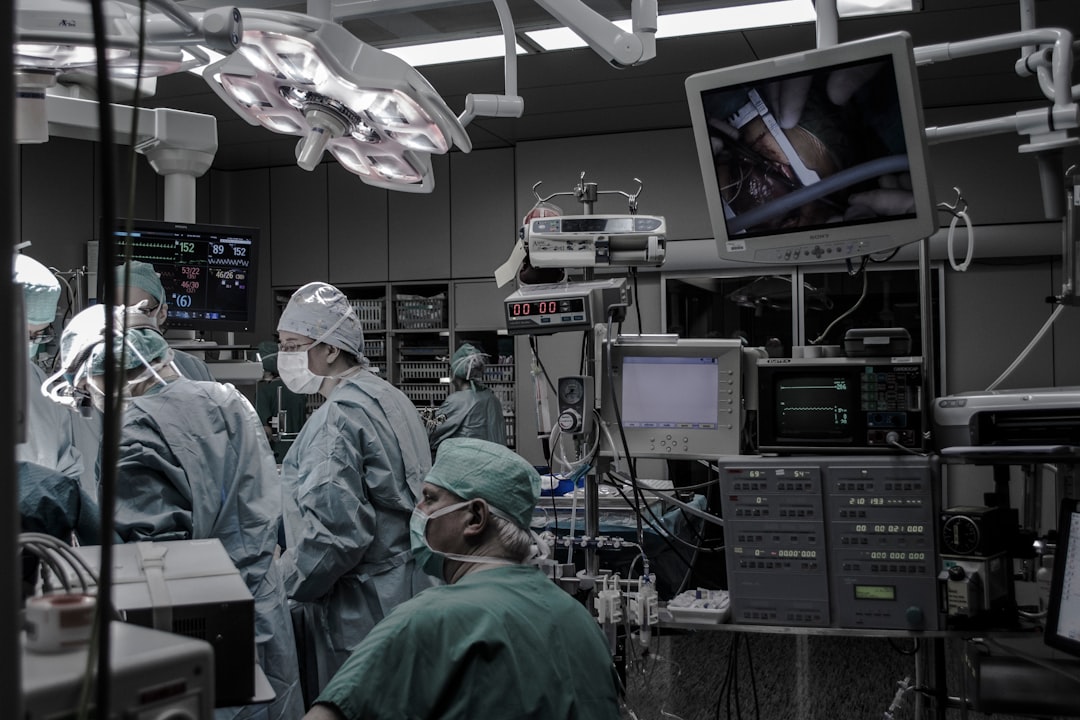
The organ repair services industry is facing increased complexity as traditional workflows struggle to meet today’s customer expectations and operational demands. For companies specializing in musical organ maintenance, restoration, and repair, the gap between offline interactions and digital processes can result in slow response times, missed opportunities, and frustrating client experiences. One persistent challenge is the difficulty of connecting printed materials or in-person assessments with timely digital action, which complicates efforts to schedule services, deliver accurate quotes, or maintain detailed, searchable records.
QR codes have emerged as an intuitive, low-friction solution to these challenges. By serving as a digital bridge, QR codes transform every touchpoint—whether printed marketing, invoices, or even the instrument itself—into an instant, trackable gateway to appointment booking, digital documentation, maintenance schedules, or post-repair support. With no app required and seamless integration across devices, QR codes provide the flexibility and clarity organ repair companies need to modernize client interactions and reduce manual overhead.
This guide will show you how to leverage QR codes to address persistent industry pain points: capturing high-value leads before they slip through the cracks, improving visibility into client engagement, and ensuring every hands-on interaction can be measured and acted on digitally. Through practical strategies, field-tested use cases, and technology-powered examples, you will see how organ repair professionals are redefining service delivery and client satisfaction in the digital age.
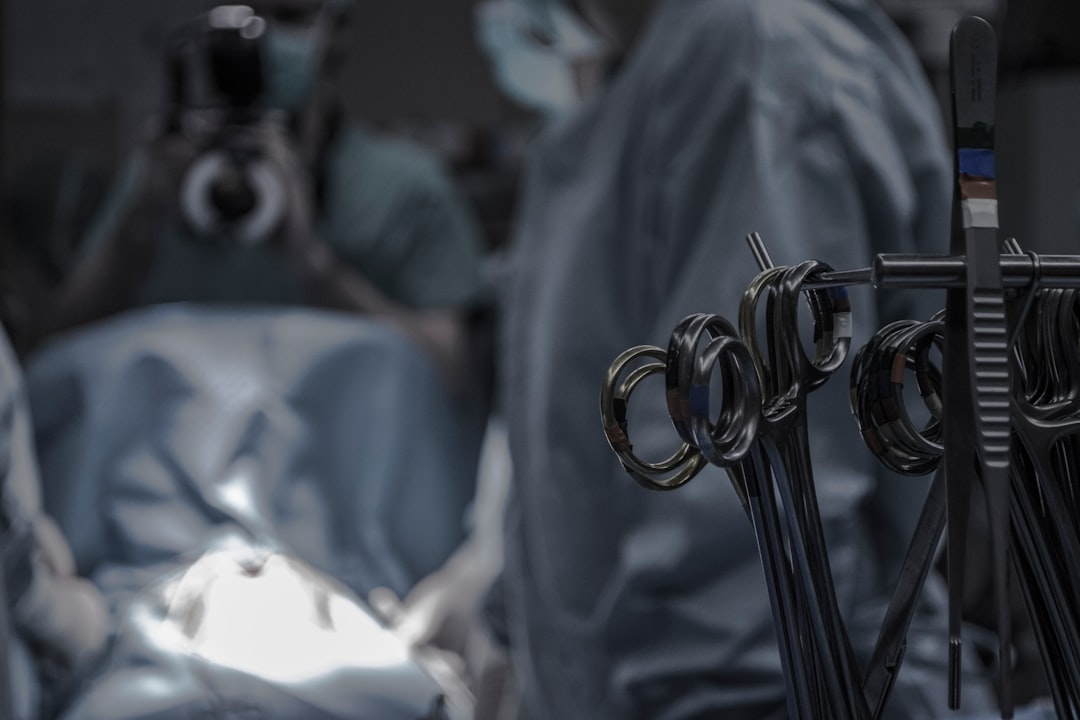
Many organ repair service providers still rely on manual processes, such as handwritten forms, disconnected appointment books, and static paper records. These outdated methods heighten the risk of missing high-value prospects because interactions are not instantly tracked, and potential clients leave before a formal lead is captured. QR codes provide a simple and immediate way to connect the moment of interest to the next action, which reduces friction and increases response speed.
By building QR-enabled workflows into everyday materials and moments, you can turn one-off encounters into measurable engagement. This approach supports faster scheduling, detailed asset tracking, and real-time client communication, all while reducing administrative overhead. It also creates a consistent digital path for every stakeholder, from concert hall managers and organists to church administrators and touring technicians.
With advanced QR solutions, every scan becomes a signal you can act on. It shows who is re-engaging, which materials are working, and how to guide clients toward the right next step without adding manual work for your team.
Many physical processes remain invisible to your digital systems, which leads to missed data and inconsistent client experience. A few targeted changes can eliminate these blind spots while preserving your proven in-person workflows.
By adopting these approaches, organ repair businesses move from siloed, error-prone workflows to a unified approach that maximizes every customer touchpoint. The result is faster conversions, richer records, and a better experience for clients who value clarity and responsiveness.

Converting offline interest into actionable, measurable engagement has long challenged the organ repair sector. Prospects attend concerts, browse restoration exhibits, or collect brochures and then disappear from view without entering your CRM. QR codes turn these fleeting moments into digital interactions that you can nurture and measure with QR marketing.
Another reason QR codes matter is their simplicity. There is no app to install, links do not need to be typed, and the call to action can be crystal clear. In a field where clients span a wide range of technical comfort levels, a single scan that leads to booking, documentation, or support can dramatically improve adoption and satisfaction across the board.
By tackling these challenges, QR codes enable organ repair companies to unlock actionable insights and guide prospects efficiently down the path to conversion. They create a measurable bridge between your craftsmanship and modern client expectations.
Organ repair businesses often need to share sensitive documentation, gather accurate client data, and maintain personal connections at scale. The right QR code format ensures that the client lands exactly where they should, with minimal friction, and that your team gets the data and control needed to deliver an excellent experience.
Use formats that match each step of your process. For example, vCards can streamline technician follow-up after on-site visits, while forms can capture nuanced project details or warranty claims. Dynamic codes allow you to update links without reprinting labels or brochures, which protects your investment in physical materials.
Advanced QR tools provide centralized management, campaign editing, and security controls. With dynamic codes, you can change destinations mid-campaign, expire links, or serve content based on scan context without replacing any physical materials.
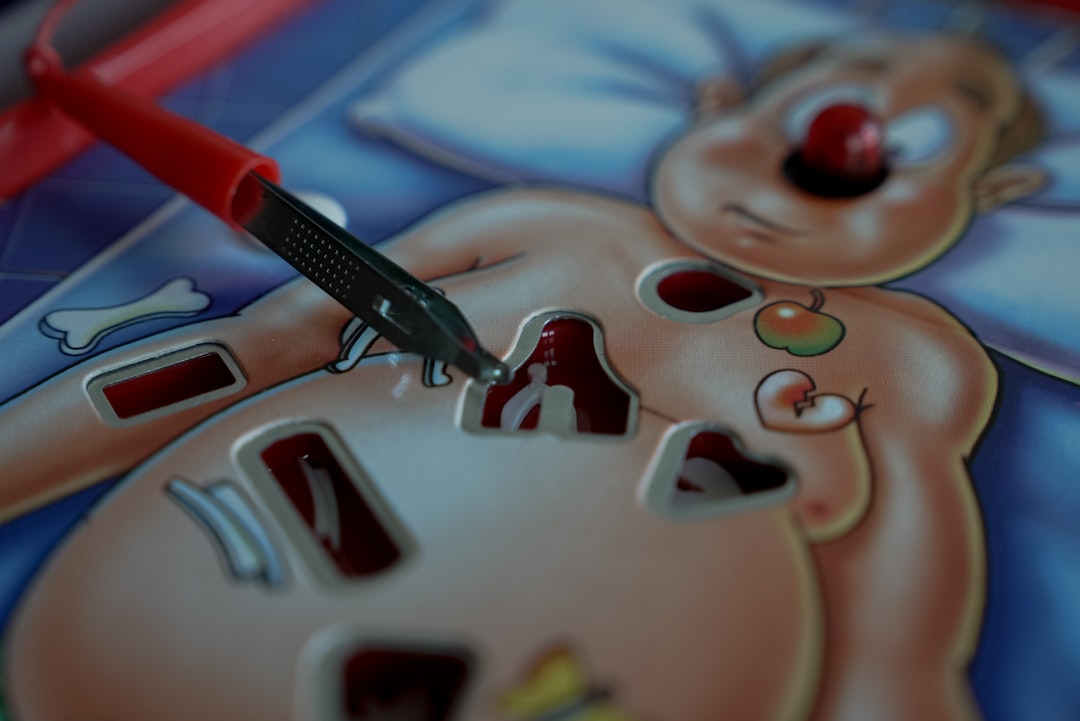
Growth in organ repair often depends on identifying and optimizing the moments when prospects shift from passive interest to active engagement. These moments occur in very specific physical contexts: during a site visit, in a sanctuary lobby, at a trade show display, or while a client reviews a post-repair invoice. By placing QR codes precisely where decisions are made, you reduce friction and increase the likelihood of conversion.
Design each placement with intent. Include a clear benefit-driven call to action, ensure good lighting and scannability, and match the destination to the user’s likely intent in that location. For example, a QR on a service tag should prioritize booking and maintenance history, while a QR on an exhibit placard should emphasize case studies and contact options.
When every scan is tracked and tied to specific business outcomes, repair services can refine outreach, prioritize follow-up, and discover segments ready for new services or upgrades. This creates a reliable pipeline rooted in real client behavior.
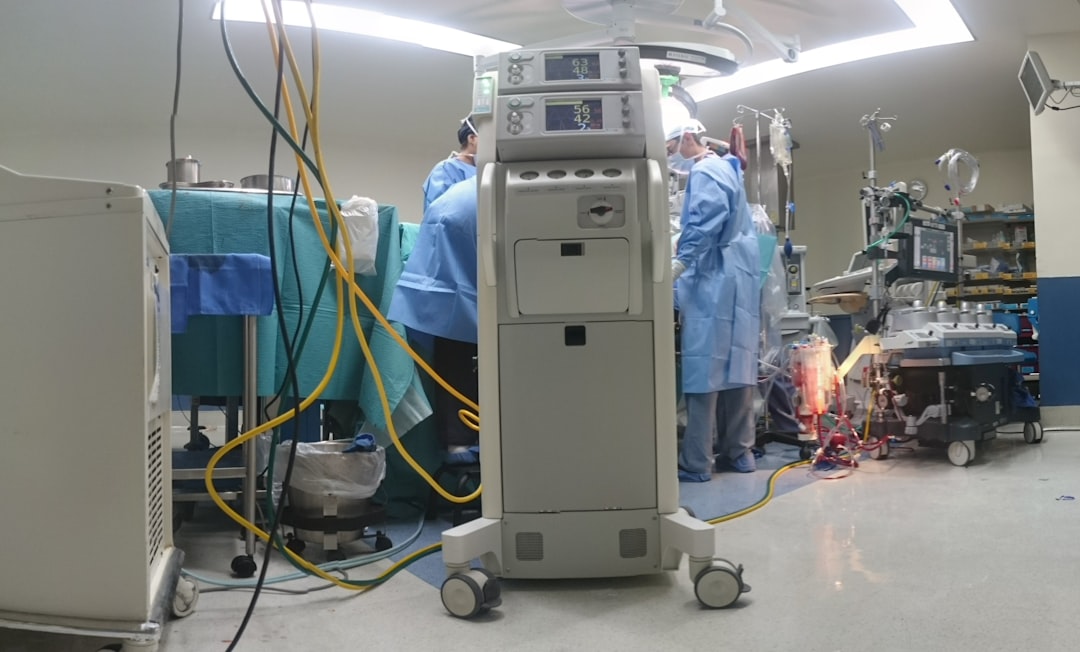
Organ repair professionals frequently engage with audiences who appreciate craftsmanship but are not always ready to commit on the spot. QR-enabled workflows bridge that gap by offering immediate, low-friction next steps that preserve momentum. They also create persistent digital records attached to the instrument and the client’s journey.
The best results come from pairing each use case with a tailored destination and a measurable action, such as scheduling a consultation, submitting specifications, or joining a maintenance program. Over time, this produces a clear picture of engagement and intent that helps your team allocate time wisely.
Each workflow transforms a one-time interaction into an ongoing dialogue. It keeps your expertise in front of the client while making it effortless to move from interest to action.
Each QR code scan is a data point that reveals intent and context. By deploying distinct codes across your materials, you can automatically segment your audience into cohorts that reflect where they scanned, when they scanned, and what they were interested in. This is particularly valuable in organ repair, where stakeholders range from church committees and music directors to venue managers and private collectors.
Integrating scan data with your CRM allows your marketing and sales teams to tailor follow-up based on real behavior, aligned with Sona’s intent data guide. This includes sending different messages to those who scanned a maintenance tag versus those who scanned a case study at a trade show exhibit.
With a platform like Sona QR, each code becomes a smart entry point into your funnel. You gain the visibility to retarget based on actions that truly predict interest and readiness to buy.
Organ repair marketing often spans printed brochures, service documentation, events, and word-of-mouth. QR codes create a connective layer across these channels that makes measurement easier and messaging more consistent. They turn static assets into interactive ones and ensure that when someone is ready to engage, there is a clear path forward.
By centralizing QR management, you can keep your branding consistent, update destinations as offers evolve, and track the performance of each placement. This helps you understand which tactics move the needle, from a sanctuary lobby display to a regional conference booth.
QR codes serve as the offline onramp to your digital marketing engine. With a centralized platform like Sona QR, you can manage all codes, monitor performance, and sync scan data with your CRM and ad platforms so you always know which channels deliver results.
Creating an effective QR campaign in organ repair is about matching the right use case with the right message and placement. The steps below help you define goals, choose formats, and deploy in ways that maximize real business outcomes such as booked assessments, retained maintenance clients, and new restoration contracts.
A thoughtful rollout also includes testing for scannability in the environments where your audience will interact. Organs often reside in low-light sanctuaries or performance spaces; designs and sizes should reflect those realities so that scans succeed the first time.
Align your campaign with a specific outcome and audience. Decide whether the priority is immediate lead capture, ongoing client retention, or cross-sell potential, since each objective affects messaging and placement.
Choose between static and dynamic QR codes based on whether you need analytics, retargeting, and update flexibility. In most marketing scenarios, dynamic codes provide the control you need as campaigns evolve.
Good design improves scan rates and comprehension. Ensure your code is scannable in real-world contexts, communicates a clear value proposition, and blends seamlessly with your brand.
Place your QR codes where they will intersect with intent. Combine persistent placements that accumulate engagement, such as instrument labels, with time-bound placements, such as event brochures, to capture both ongoing and momentary interest.
Treat QR campaigns as living programs. Use analytics to refine your placements, creative, and destinations, following best practices in campaign measurement.
A disciplined approach to planning, deployment, and optimization turns QR codes into a repeatable growth engine. Over time, you will build a dataset that reveals where the best leads originate and which messages move clients to action.
Organ repair firms often struggle to connect offline interactions with revenue outcomes, which complicates budgeting and campaign evaluation. QR codes, paired with modern analytics tools, close this attribution gap by tying real-world engagement to measurable actions like form fills, consultations, and maintenance bookings.
Beyond basic scan counts, the goal is to understand which placements drive valuable outcomes and how your audiences move from first scan to signed contract. When scan data flows into your CRM, you can see which channels consistently produce qualified opportunities and where to invest more.
With proper analytics, organ repair companies can justify spend, optimize campaigns, and ensure every engagement signal is captured. This transforms QR initiatives from tactical experiments into a core part of performance marketing.
Once you have QR codes in market, the next step is to scale impact with better data, clearer calls to action, and process automation. Start by aligning your codes to a defined buyer journey that spans discovery, evaluation, and commitment—ensuring outcomes are tracked as outlined in Sona’s pipeline influence.
Focus on placements and media that are common in your day-to-day operations. In organ repair, that often means invoices, service tags, brochures, shop signage, and event materials. By optimizing these first, you can unlock measurable gains without introducing new channels or complex initiatives.
These practices help organ repair companies avoid generic outreach and ensure immediate tracking and lasting loyalty. By automating follow-up and attributing outcomes, you increase both client satisfaction and operational efficiency.

Organ repair providers are addressing pain points like missed follow-up, lost documentation, and anonymous event interest with QR-based solutions. Success tends to come from aligning the QR experience with the context of the scan and from making destinations useful and actionable.
Consider how these approaches could translate to your own materials and environments. Each example shows the power of small changes in physical assets that drive big improvements in data capture and client experience.
These approaches connect every encounter to actionable, trackable next steps. They help organ repair firms turn appreciation for artistry into concrete business outcomes while maintaining a high-touch, expert-driven brand experience.
QR codes are transforming organ repair services by enabling every client interaction, from offline discovery to after-service follow-up, to be instantly measurable, actionable, and tailored. By addressing persistent pain points such as missed high-value prospects, incomplete data, and insufficient segmentation, QR-driven workflows let companies capture leads at the point of engagement and support ongoing customer satisfaction with unprecedented clarity.
Integrating QR codes across signage, invoices, event materials, and even instruments empowers repair firms to enrich account records, reveal purchase intent, and personalize outreach, aligning marketing and service delivery with actual client behavior. Each scan lays a stronger foundation for future business, making success a matter of strategy rather than chance.
By adopting QR codes as part of a modern organ repair approach, providers establish a new standard for client experience, sustained growth, and operational efficiency, transforming traditional challenges into digital opportunities at every turn. If you are ready to begin, consider generating your first dynamic codes with a platform like Sona QR, connecting scan activity to your CRM, and building automated follow-ups that turn every scan into progress. Start creating QR codes for free.
QR codes have revolutionized organ repair services by transforming how patients and healthcare providers access critical information and resources. Whether it’s streamlining patient onboarding, delivering personalized post-repair care instructions, or enabling seamless communication between medical teams, QR codes replace outdated paperwork with instant, mobile-friendly interactions that enhance patient outcomes and operational efficiency. Imagine patients effortlessly accessing their repair histories or rehabilitation guides with a simple scan—empowering better care and faster recovery.
With Sona QR, you can create dynamic, trackable QR codes tailored for organ repair services in seconds, update information instantly without reprinting, and connect every scan to valuable patient engagement data. This means no missed opportunities to improve care or build stronger patient relationships—just smarter, more effective services that drive trust and satisfaction.
Start for free with Sona QR today and transform every scan into improved access, better care, and lasting patient confidence.
Organ repair involves assessment, scheduling appointments, performing maintenance or restoration work, documenting service history, and providing follow-up support, which can be streamlined using QR codes for booking, tracking, and communication.
Look for organ repair companies that use modern tools like QR codes for transparent communication, detailed documentation, easy appointment booking, and that provide clear maintenance histories and technician verification.
The article does not provide specific information on the average cost of organ repair services.
While specific signs are not detailed, the article suggests that regular maintenance scheduling and inspections facilitated by QR-enabled service tags help detect when repair or restoration is needed.
Maintaining your organ involves following up on maintenance schedules, accessing up-to-date care instructions via digital guides linked through QR codes, and booking regular servicing through easy digital appointment systems.
QR codes create a digital bridge from offline interactions to online actions, enabling instant appointment booking, access to repair histories, real-time communication, and automated follow-ups, which reduce administrative errors and enhance client satisfaction.
Organ repair services use web links for information, forms for intake and quotes, vCards for contact sharing, app downloads for maintenance management, and document sharing QR codes for certificates and reports.
QR codes should be placed on service vehicle signage, in-shop displays, trade show booths, post-service documents like invoices, and directly on organs with maintenance tags to capture interest at key decision points.
By using dynamic QR codes integrated with CRM systems, companies can track scans by location, time, and device, connect scan events to bookings and contracts, and analyze which channels drive qualified leads and revenue.
Best practices include defining clear goals, choosing dynamic QR codes for flexibility, designing codes for easy scanning, deploying them in relevant locations, tracking scan data, and continuously optimizing campaigns based on analytics.
Use Sona QR's trackable codes to improve customer acquisition and engagement today.
Create Your FREE Trackable QR Code in SecondsJoin results-focused teams combining Sona Platform automation with advanced Google Ads strategies to scale lead generation

Connect your existing CRM

Free Account Enrichment

No setup fees
No commitment required

Free consultation

Get a custom Google Ads roadmap for your business






Launch campaigns that generate qualified leads in 30 days or less.
